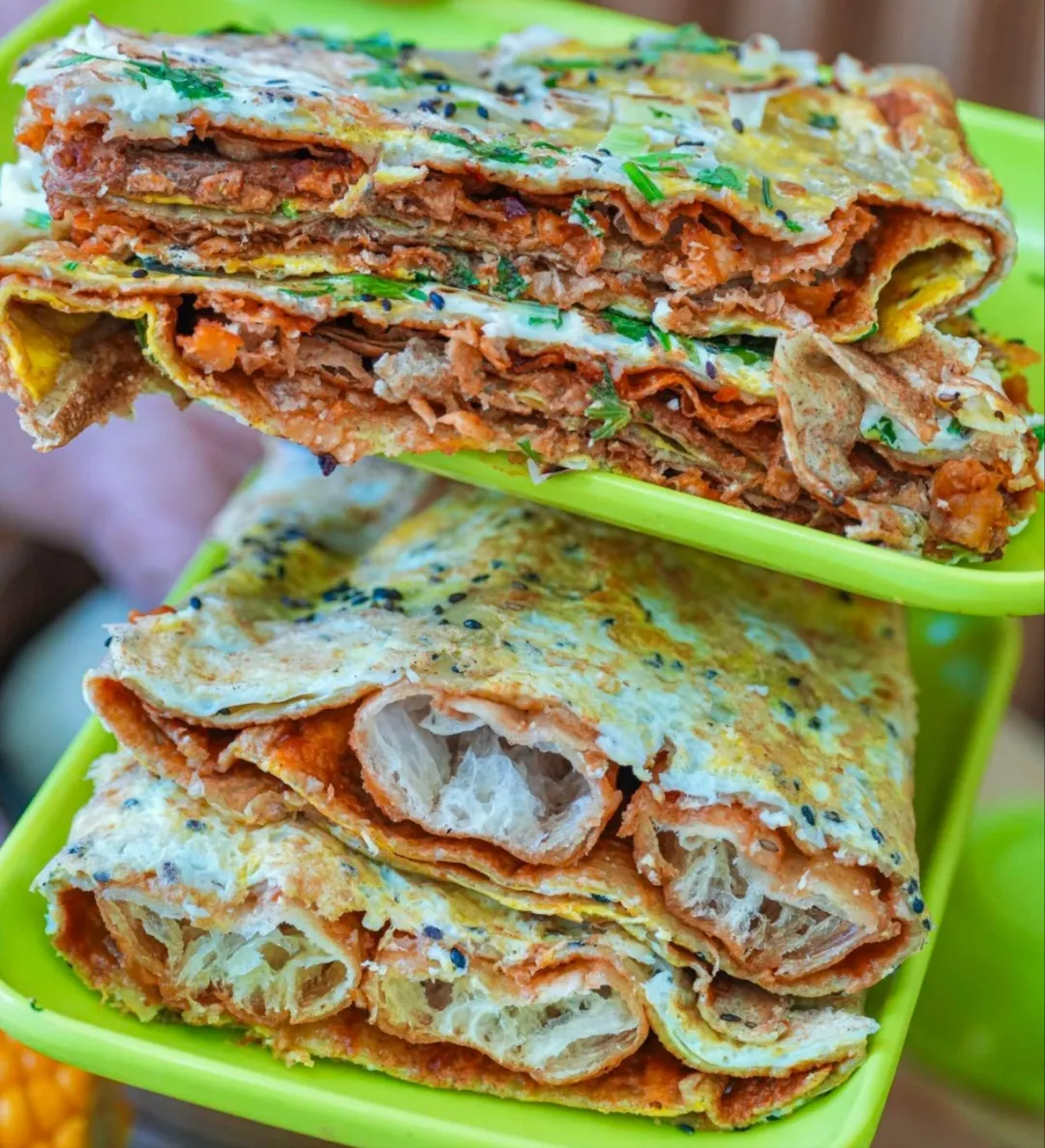1、Goubuli steamed buns: a symbol of Tianjin created with a century of craftsmanship
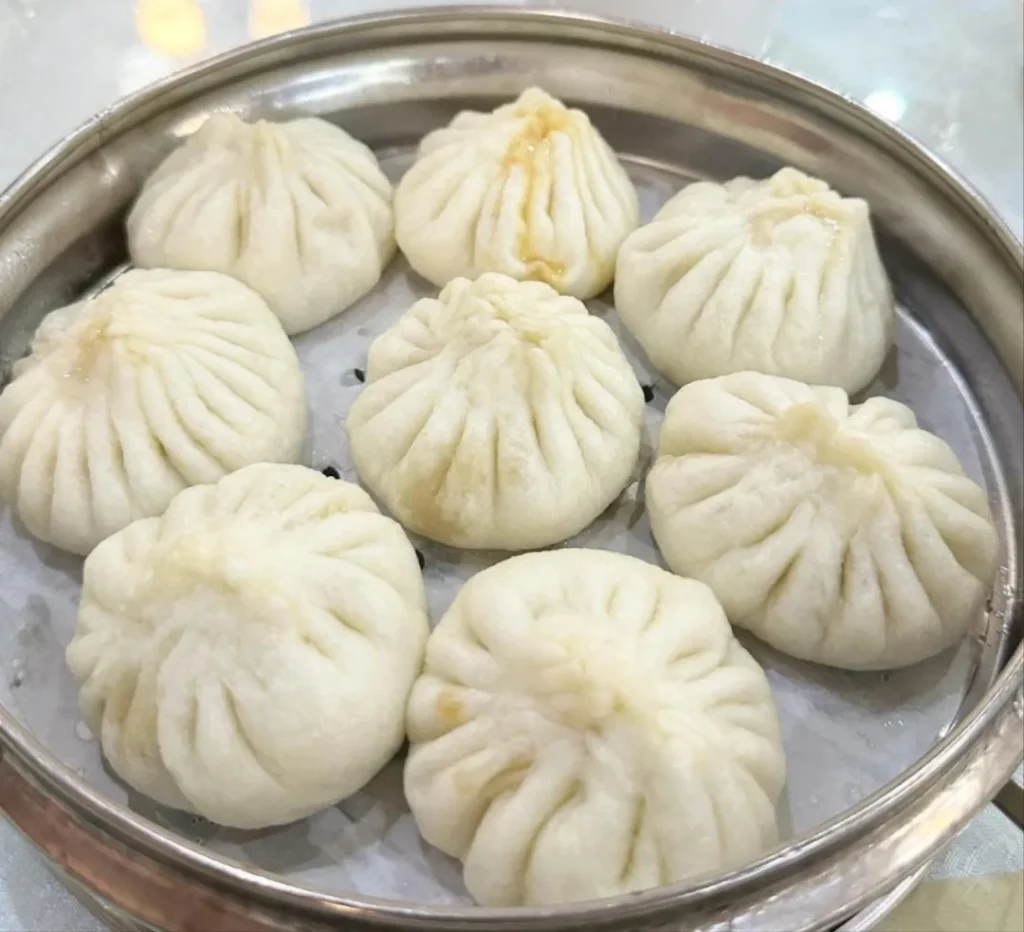
☞ Goubuli steamed buns, which were first created during the Xianfeng period of the Qing Dynasty, were named after the owner Gao Guiyou’s nickname “Goubuli”. Gao Guiyou learned his craft at the age of 15 and set up a stall to sell buns in Houjia Hou Street. Because his buns were made of authentic ingredients and tasted delicious, customers kept coming in an endless stream, and he even had no time to respond, so he was nicknamed “Gouzi sells buns and ignores all of them”.
☞ It is famous for its “thin skin, large filling, and eighteen folds”. The dough is made with semi-fermented dough technology, which retains the chewiness while remaining soft; the filling is mainly pork ribs, and soy sauce, chopped green onion and ginger are added. After being stirred clockwise until the “water-beaten filling” state, the soup overflows after steaming. The traditional way of eating emphasizes “first lift the folds, second open the window, and third drink the soup”, and it is paired with vinegar and garlic cloves to relieve greasiness.
2、Jianbing: a national breakfast in the city
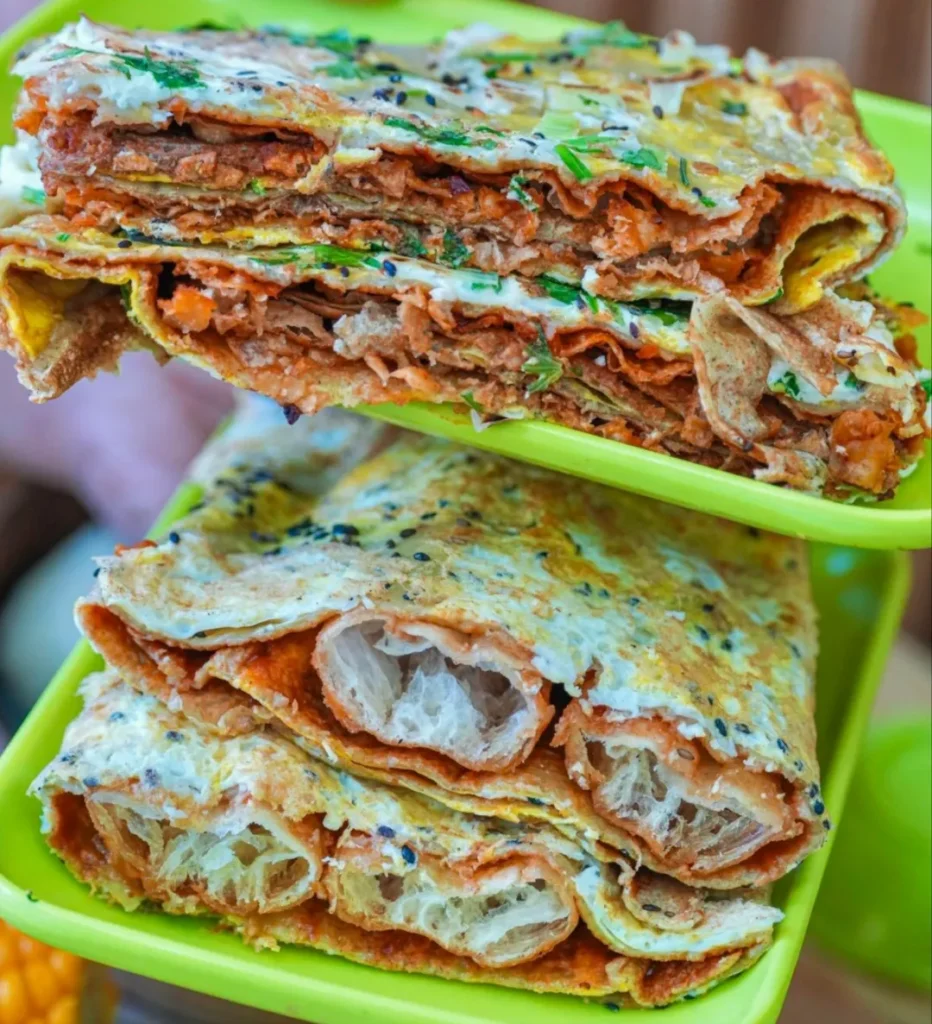
Pancake and fruit originated from the workers of Tianjin Port who spread mung bean noodles into pancakes, wrapped them with deep-fried dough sticks or pastry grates (thin and crisp), and became a convenient and full breakfast. After 1949, vendors were mostly concentrated in cities such as Nanshi and Guiyi Street; In 2016, its production techniques were selected as Tianjin municipal intangible cultural heritage. In recent years, Jianbing Guozi has become popular overseas with its visual impact of “spreading Jianbing”. The TikTok topic has nearly 40 million views, and Musk also tasted it during his visit to China.
Authentic pancake fruit is mainly made from mung bean flour, paired with millet flour or yellow bean flour to enhance the aroma. When spreading, it should be “as thin as paper and as uniform as a mirror”. Add eggs, sprinkle with scallions and black sesame seeds, wrap them inside out into a freshly fried pastry grate, brush sweet flour paste, Fermented bean curd, and chili sauce, and fold them into a roll. In terms of taste, the mung bean noodles have a fragrant aroma, the eggs are tender and smooth, the rice flour is crispy, and the sauce is salty, fresh, and slightly spicy.
3、Erduoyan fried cake: a sweet legend deep in the alley

☞ During the reign of Emperor Guangxu, Liu Wanchun, a Hui Muslim, opened a fried cake shop called “Zengshengkui” in Erduoyan Hutong outside the North Gate. The shop got its name because it was close to a narrow alley. Liu Wanchun used glutinous rice from Xiaozhan to grind into pulp, and red beans to make bean paste. After the “three frying and three filtering” process, the fried cakes were crispy on the outside and soft on the inside. After the public-private partnership in 1957, the shop was renamed “Erduoyan Fried Cake Shop” and was recognized as a “Chinese Time-honored Brand” by the Ministry of Commerce in 2006.
☞ Erduoyan fried cakes are made of glutinous rice as the skin, red beans and brown sugar as the filling, and are fried twice: first fried at 130℃ until set, and then fried at 200℃ until golden. The finished product is flat and spherical, with a thin skin like a cicada’s wing and crispy, and a black and red filling that is delicate, sweet and not greasy. When bitten open, the aroma of beans and osmanthus gushes out. The traditional way of eating it is with a bowl of soy milk or noodle tea. It can be heated up before eating in winter. The warm red bean paste warms the stomach and satisfies your appetite.
4、Fried Dough Twists on 18th Street: Tianjin style in crispy
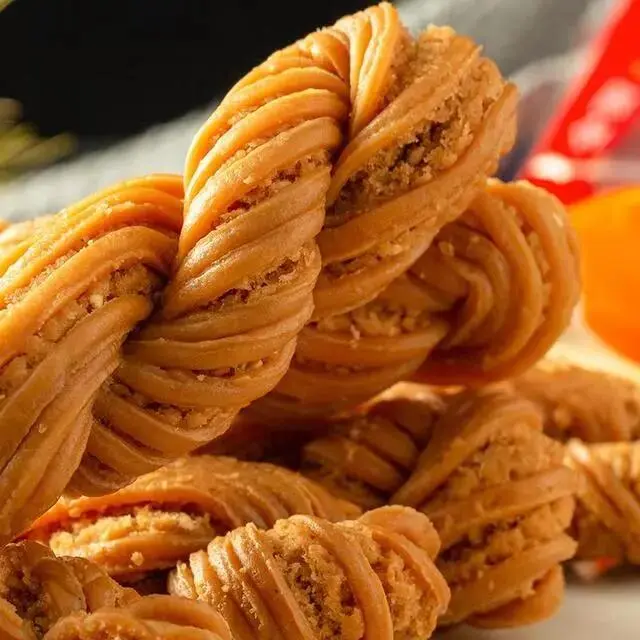
☞ In 1920, Liu Laoba, the young shopkeeper of Guifaxiang, accidentally created stuffed fried dough by mixing pastry residue into fried dough. After that, he selected refined white flour and high-quality clear oil, and added more than 10 kinds of small ingredients such as sesame, peach kernels, and green plums, and refined them through three twists and seven processes. Because the store is located on the 18th Street of Dagu South Road, it is named “18th Street Fried Dough”. In 1989, its production skills were selected as a national intangible cultural heritage and were presented to foreign guests as a national gift.
☞ The shape of the 18th Street Fried Dough is like a double dragon coiled, with a diameter of up to 30 cm, and a variety of crisp fillings in the center. Its craftsmanship is unique: eggs and honey are added to the dough, and the oil temperature is precisely controlled at 180℃ during frying, so that the fried dough is crispy on the outside and crispy on the inside, and it will not become soft after a long time. In terms of taste, the sweet fragrance reveals the mellowness of nuts. The salty and sweet “Pepper and Salt Fried Dough” and the low-sugar version “Yitang Fried Dough” are also popular among consumers. In 2023, the brand launched small packages of fried dough twists to make it easier for tourists to carry.
5、Guoba Cai: The Taste Code for Tianjin style Breakfast
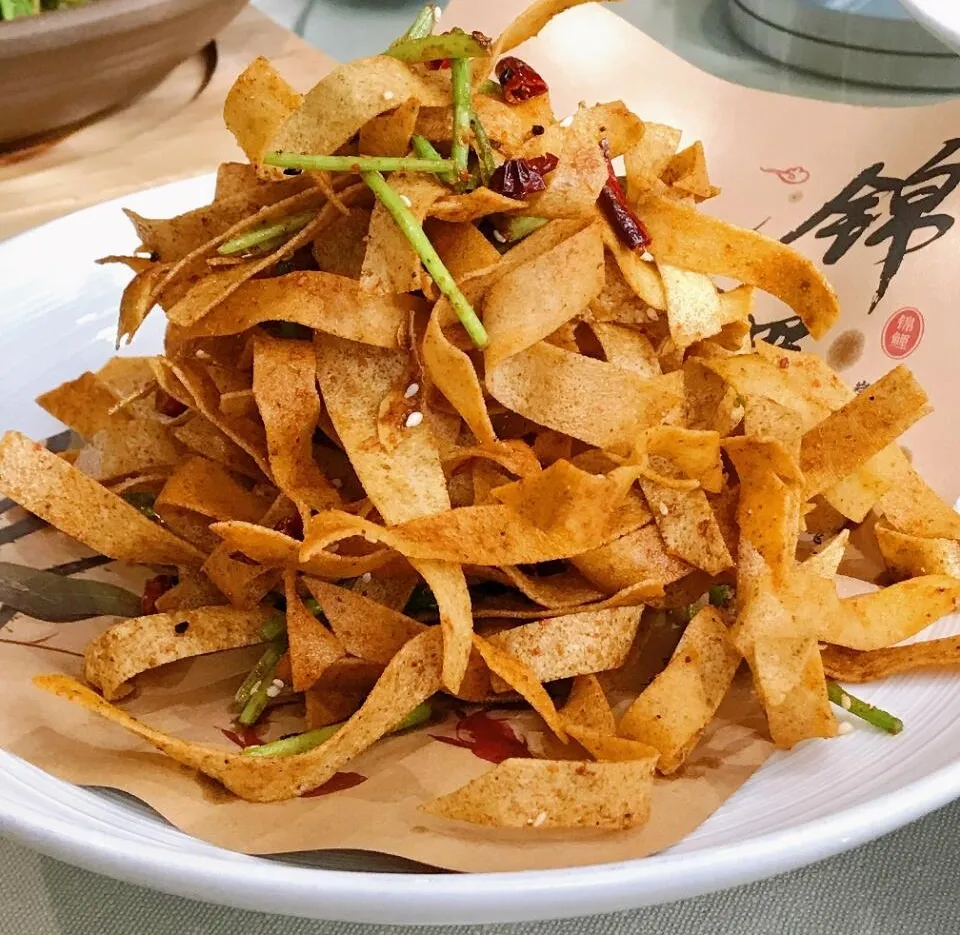
☞ Guobacai originated from the period of canal transportation. Tianjin dock workers spread mung bean and millet paste into pancakes, cut them into willow leaf shapes, and dipped them into vegetarian stew for consumption. During the Qianlong period of the Qing Dynasty, vendor Zhang Lan improved the process and added sesame paste, fermented bean curd and other condiments to make it an independent snack. In 1997, “Dafulai” Guobacai was selected as “Famous Chinese Snacks”, and the 2023 “Breakfast Tianjin Tourism Map” listed it as a must-eat delicacy.
☞ Guobacai uses pancakes made of mung bean and millet paste as the main ingredient. After cutting into strips, it is dipped into a vegetarian stew made with bone broth, soy sauce and aniseed. When eating, drizzle with sesame paste, fermented bean curd, chili oil, coriander and dried tofu cubes. In terms of taste, Guobacai is tender and chewy, and the stew is salty, fresh and translucent. In summer, mung beans are used to clear away heat and relieve summer heat. There is a long queue every morning at “Mu Ji Guobacai” in the northwest corner. Visitors can experience an authentic Tianjin breakfast with fried rolls or sesame cakes.
6、Ripe pear cake: the taste of the clouds in childhood memories

☞ The original name of cooked pear cake is “Zeng’er Cake”, which is named because it looks like a pear after being steamed. It has been recorded in the “Jinmen Zhuzhici” of the Qing Dynasty. The traditional method uses rice flour residue as the raw material and steams it in a wooden steamer. The fillings are only bean filling, white sugar, and red fruit. After 2010, with the rise of intangible cultural heritage protection, cooked pear cake has become popular again. In 2023, Tianjin universities will carry out the “Cooked Pear Cake Making Experience Activity” to attract young people to participate.
☞ Cooked pear cake is made of rice flour as the main ingredient. After fermentation, it is filled into a copper steamer and steamed for 1 minute. The finished product is fluffy and porous, topped with freshly boiled red fruit, bean paste, chocolate and other sauces, and then sprinkled with green and red silk. The taste is soft, glutinous and delicate, sweet but not greasy. New flavors such as strawberry and matcha are more popular among young people. The “Old Taste Cooked Pear Cake” stall on Nanshi Food Street still retains the traditional wooden steamer production, becoming a hot spot for tourists to check in.
7、Shitoumenkan vegetarian buns: a vegetarian feast in Tianjin
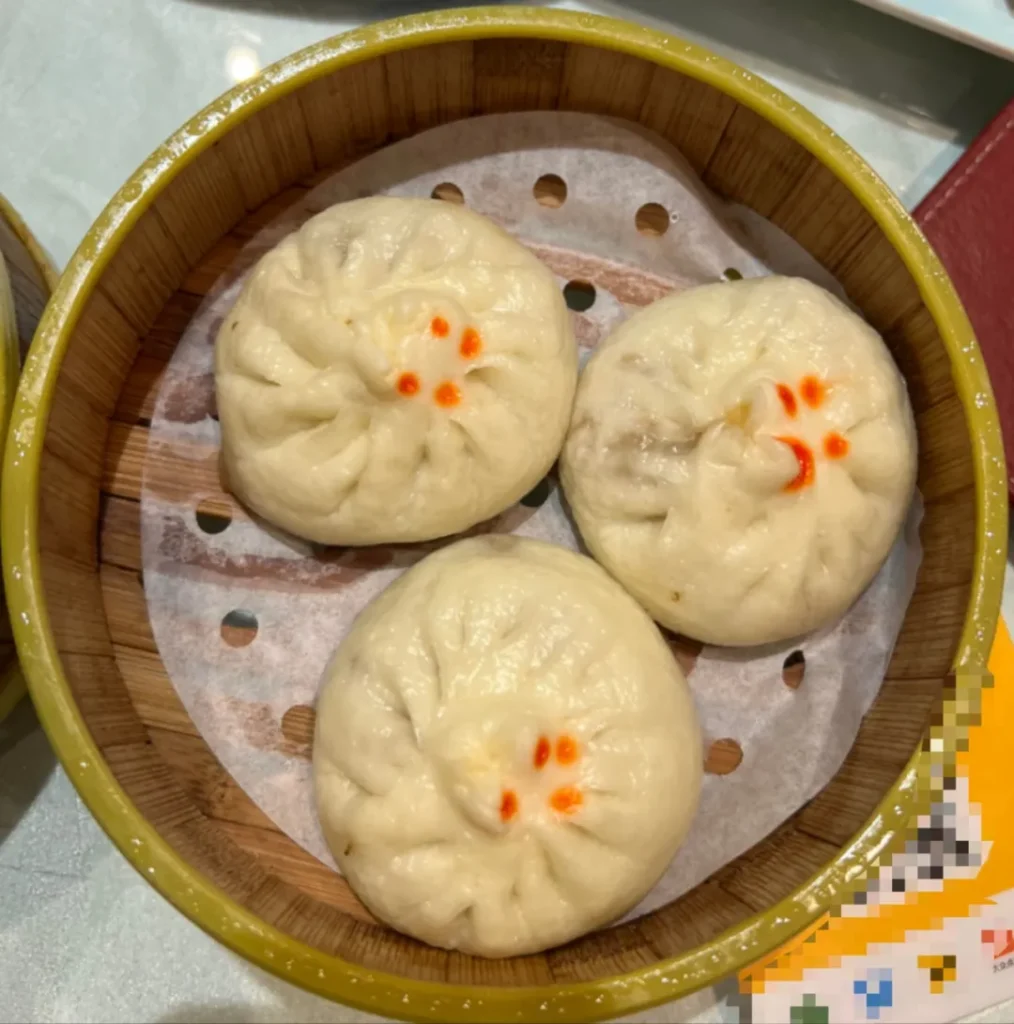
☞ In the late years of Emperor Qianlong’s reign in the Qing Dynasty, Zhensuyuan Restaurant opened next to the Tianhou Temple. It was named after the stone threshold at the door. After tasting it, Empress Dowager Cixi named it “Stone Threshold Vegetarian Bun”, which made it famous. In 1985, the third-generation heir Ye Zhenping resumed business in Nanshi Food Street. In 1988, he won the gold medal of the “China Expo” in Tokyo, Japan, and passed the review of China’s time-honored brand in 2023.
☞ Vegetarian buns use 19 kinds of ingredients such as mung bean sprouts, button mushrooms, and fungus. They are mixed with secret sesame oil, wrapped in thin skin and steamed. Each bun has 21 folds, shaped like a chrysanthemum, with thin skin and large fillings, low in fat and high in protein. In the fillings, Hebei small-milled sesame oil adds fragrance, Jilin fungus adds chewiness, and Beijing fermented bean curd gives a salty and fresh base. In 2023, the brand launched quick-frozen vegetarian buns to meet the needs of modern fast-paced life.
8、Tianjin Old Tofu: The Ultimate Sophistication in Simplicity
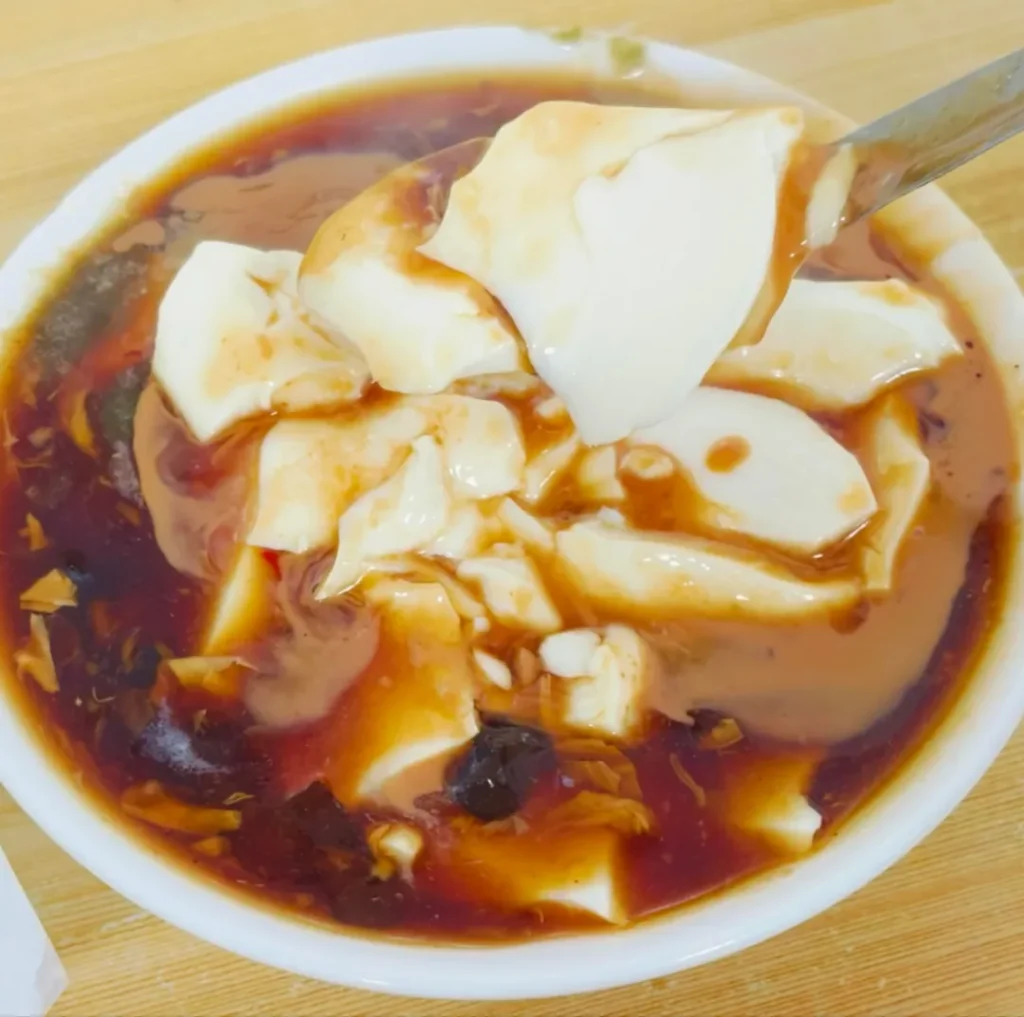
☞ The history of Tianjin old tofu can be traced back to the Han Dynasty. It was recorded in “Miscellaneous Notes of Tianjin” during the Guangxu period of the Qing Dynasty that it was a breakfast for the people. The traditional method is to use gypsum to make northern tofu, pour meat stew (chicken soup or pork ribs soup), and match it with sesame sauce, fermented bean curd and other condiments. In 2020, “Zhimeizhai” old tofu was selected as the “Tianjin Gift” and became a must-try delicacy for foreign tourists.
☞ Old tofu uses rennet tofu or northern tofu, steamed to remove the beany smell, and poured with a marinade made from bone soup, fungus, and shiitake mushrooms. Condiments include sesame sauce, fermented bean curd, chili oil, chives, etc., which are added according to personal taste. In terms of taste, the tofu is as tender as solidified fat, and the marinade is salty, fresh and mellow. It is paired with freshly baked sesame cakes or steamed bread, which can be called a “golden combination”. In 2023, some merchants launched a “low-salt version” of old tofu to cater to the trend of healthy eating.
9、Tang Duner: A candy fairy tale in the cold winter
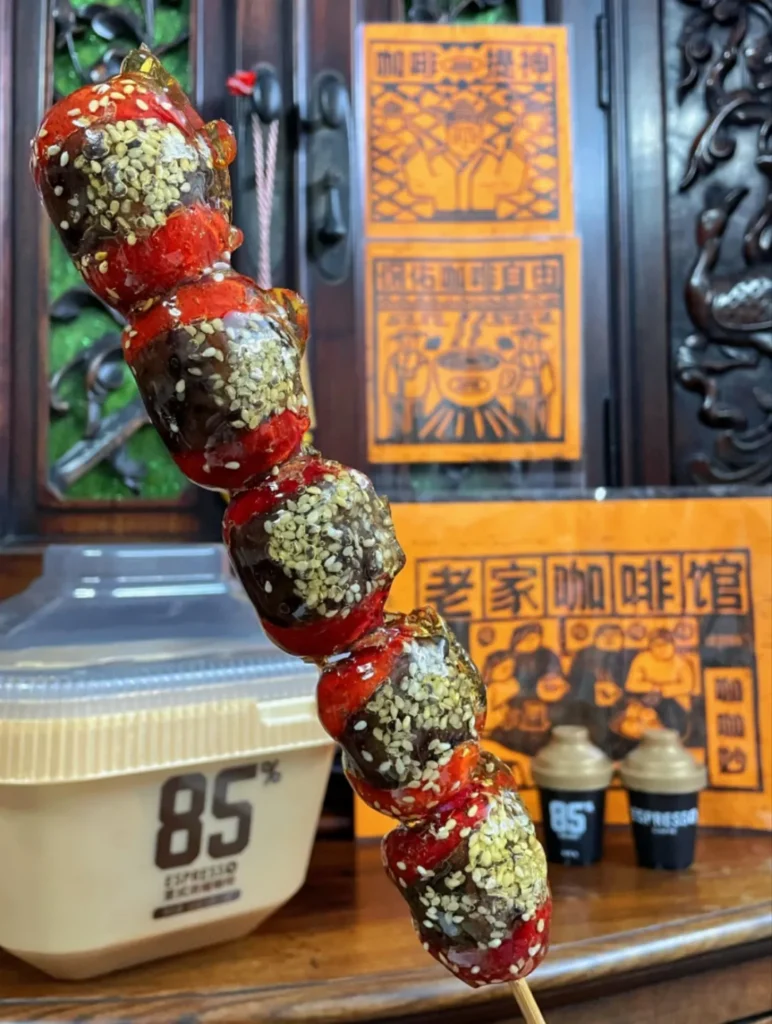
☞ Tangduner originated in Lin’an during the Southern Song Dynasty. After being introduced to Tianjin, it became a winter-only snack. During the Guangxu period of the Qing Dynasty, “Tangduer” vendors appeared on the streets of Tianjin. They used hawthorn as the main ingredient and dipped it in rock sugar syrup. After 2010, Tangduner became popular in South Korea. In 2023, there were more than 300 Korean candied haws chain stores, and the export of Chinese culture was remarkable.
☞ Tangduner is made of Jixian hawthorns without pits, dipped in amber rock sugar syrup, and cooled to form a crystal sugar shell. The traditional taste is sweet and sour and appetizing, and innovative flavors such as strawberry, yam, and bean paste are richer. Tianjin people pay attention to “dip and sell now”. In winter, street vendors set up sugar pots, and steaming Tangduner has become a scene in the city. In 2023, “Old Flavor Tangduner” will be launched in gift boxes, incorporating national trend design, and become a good gift for festivals.
10、Fried doughnuts: the taste crystallization of market wisdom
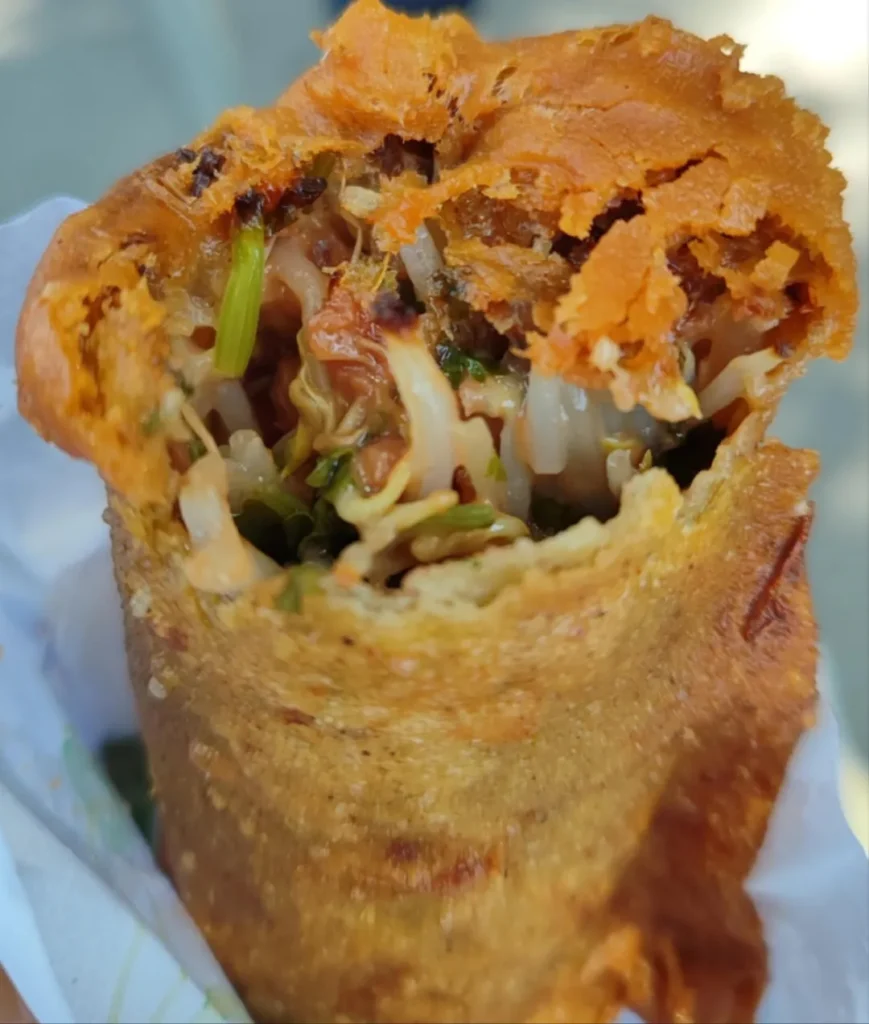
☞ Fried rolls originated in the late Qing Dynasty and early Republic of China. Hui people in Tianjin combined vegetarian fillings with bean curd to create this halal snack. Traditional fillings are mung bean, dried tofu, coriander, etc., seasoned with sesame oil and sesame paste. In 2023, the “Mu Ji Fried Rolls” in the northwest corner was selected into the “Breakfast Tianjin Tourism Map”, and the queue lasted for more than 1 hour every morning.
☞ Fried rolls are wrapped with bean curd, cut into 15 cm long sections, sealed with flour paste and fried. The outer skin is golden and crispy, the inner filling is fragrant and not greasy, and the bean fragrance and fermented bean curd are intertwined. The authentic way to eat it is to sandwich it in a hot pancake, with rice crust or old tofu, which is salty, crispy and rich in layers. In 2023, the merchant launched a “low-fat version” of fried rolls, using air fryer technology to reduce the fat content.

